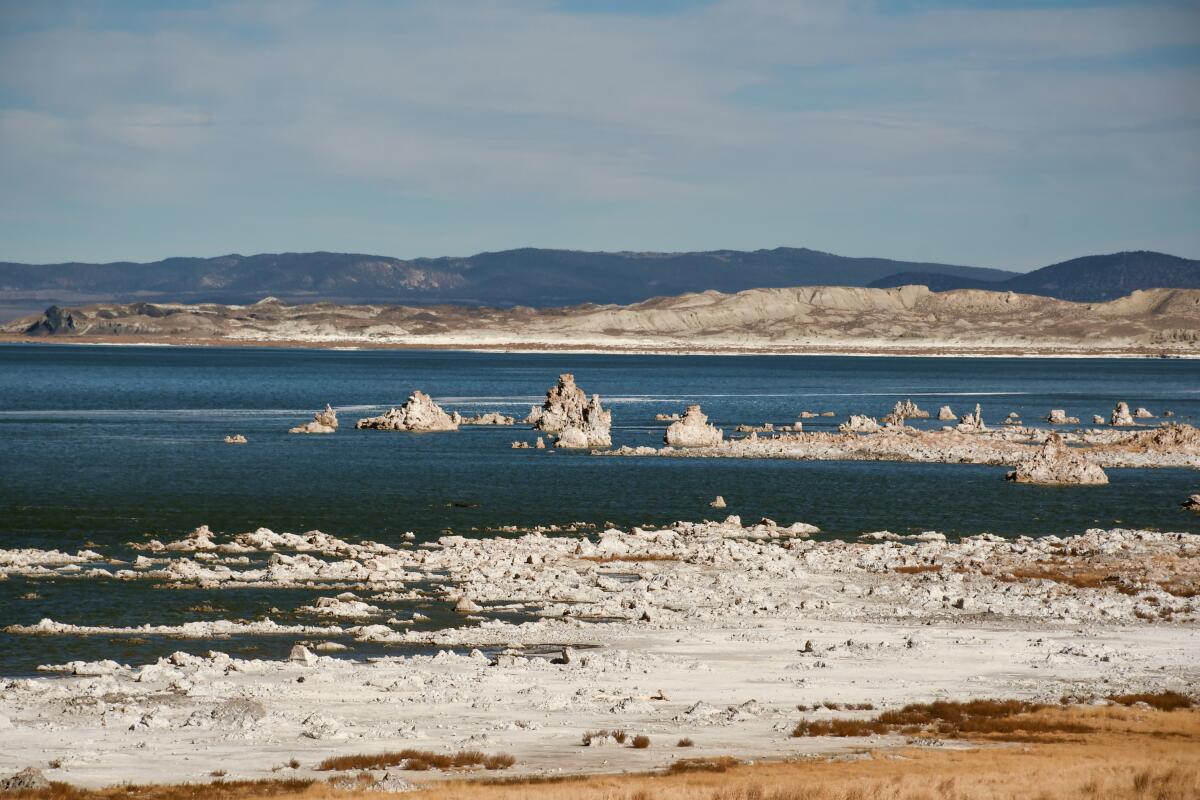Letters to the Editor: L.A. doesnāt need Mono Lakeās water ā but Mono Lake desperately does

To the editor: Thank you for Bruce Resnikās essay, āA wet winter began to replenish Mono Lake. L.A. should let it be a lake again.ā
I opened the Mono Lake Committeeās Los Angeles office in 1979. At that time, Los Angeles Department of Water and Power consistently opposed efforts to protect Mono Lake. However, visionary, tireless advocacy persuaded Californiaās Legislature to establish the Mono Lake Tufa State Natural Reserve in 1981 and Congress to establish the Mono Basin National Scenic Area in 1984.
Most significantly, the California Supreme Courtās 1983 decision in National Audubon Society vs. Superior Court determined that Mono Lakeās public trust resources required reconsideration of the lakeās water needs.
In 1994, the State Water Board ruled that Mono Lakeās water level must rise to 6,392 feet above sea level by 2014. The DWP has failed to comply with that decision. The lake level remains about 12 feet below that mandated level.
In mid-June, I joined several hundred people at Mono Lake to celebrate this internationally significant natural resource. Never before had I seen so much water pouring into Mono from its streams. Wading through Lee Vining Creekās frigid waters as they rushed into the lake was a joyous experience.
It is outrageous that DWP and the State Water Board have failed to meet their commitments. The relatively small amount of water that the DWP takes from Mono Lake is watery āchump change,ā yet it is priceless for Mono Lakeās restoration. Now is the time to stop diversions and restore Mono Lake.
Thomas Cassidy, Arlington, Va.
..
To the editor: Thank you for the important piece explaining why the DWP must stop diverting water from the streams draining into Mono Lake. In addition to all of the reasons cited, there are two more very important points to consider.
First, the tunnel that carries the diverted water south toward Bishop actually captures a lot of groundwater too. In fact, groundwater infiltration into the tunnel accounts for about half of the water obtained from the Mono Basin.
Thus, if the diversions from the streams that feed Mono Lake stop, the DWP will continue to receive half of the water currently taken.
Second, the exposed lake bed causes dust air pollution. Many days the regional dust particulate pollution far exceeds clean air standards. The DWP has spent $2.5 billion attempting to remedy a similar problem at Owens Lake. A similar project will eventually be necessary at Mono Lake.
Raising the lake to the āmanagement levelā will clearly lessen this problem. The state water regulator must act now.
Noel Park, Rancho Palos Verdes






